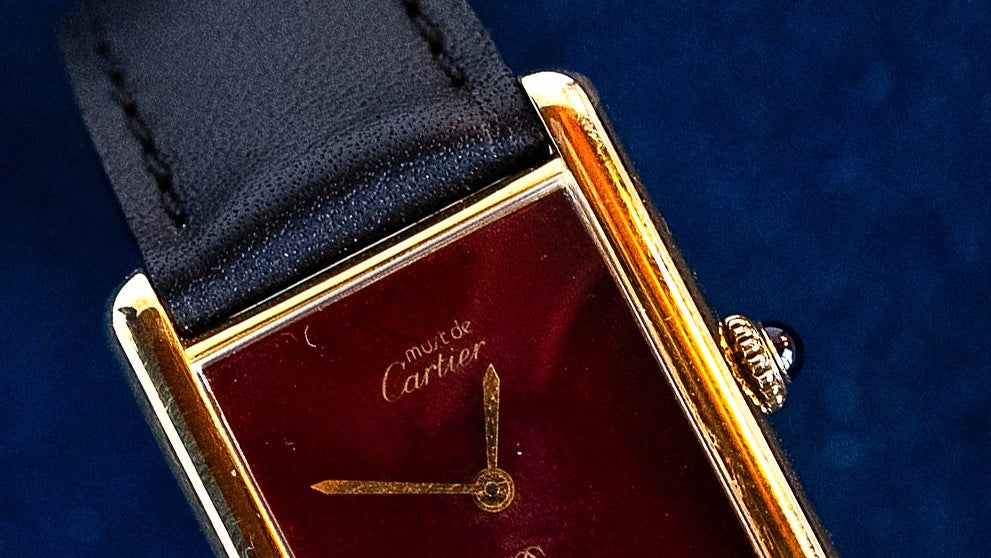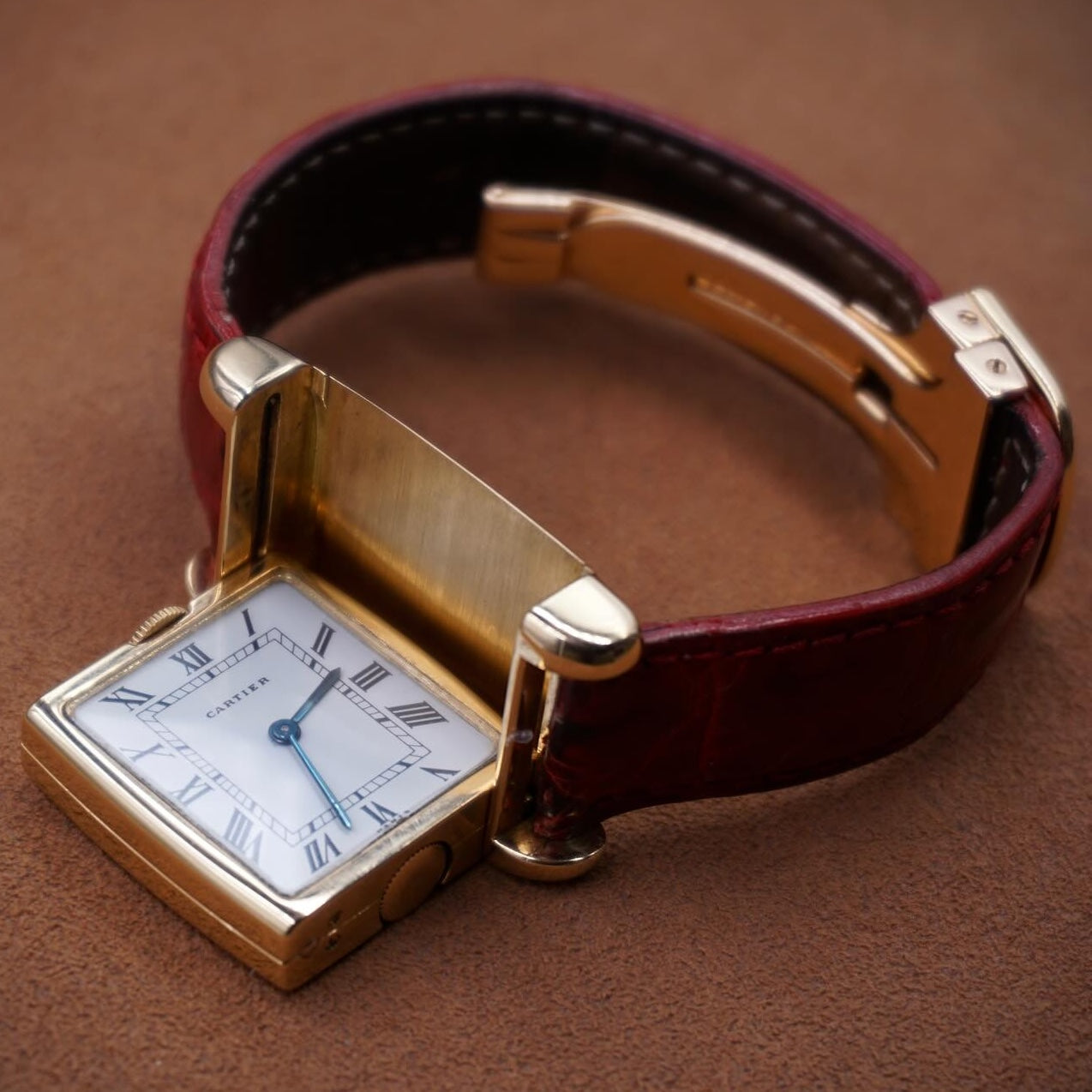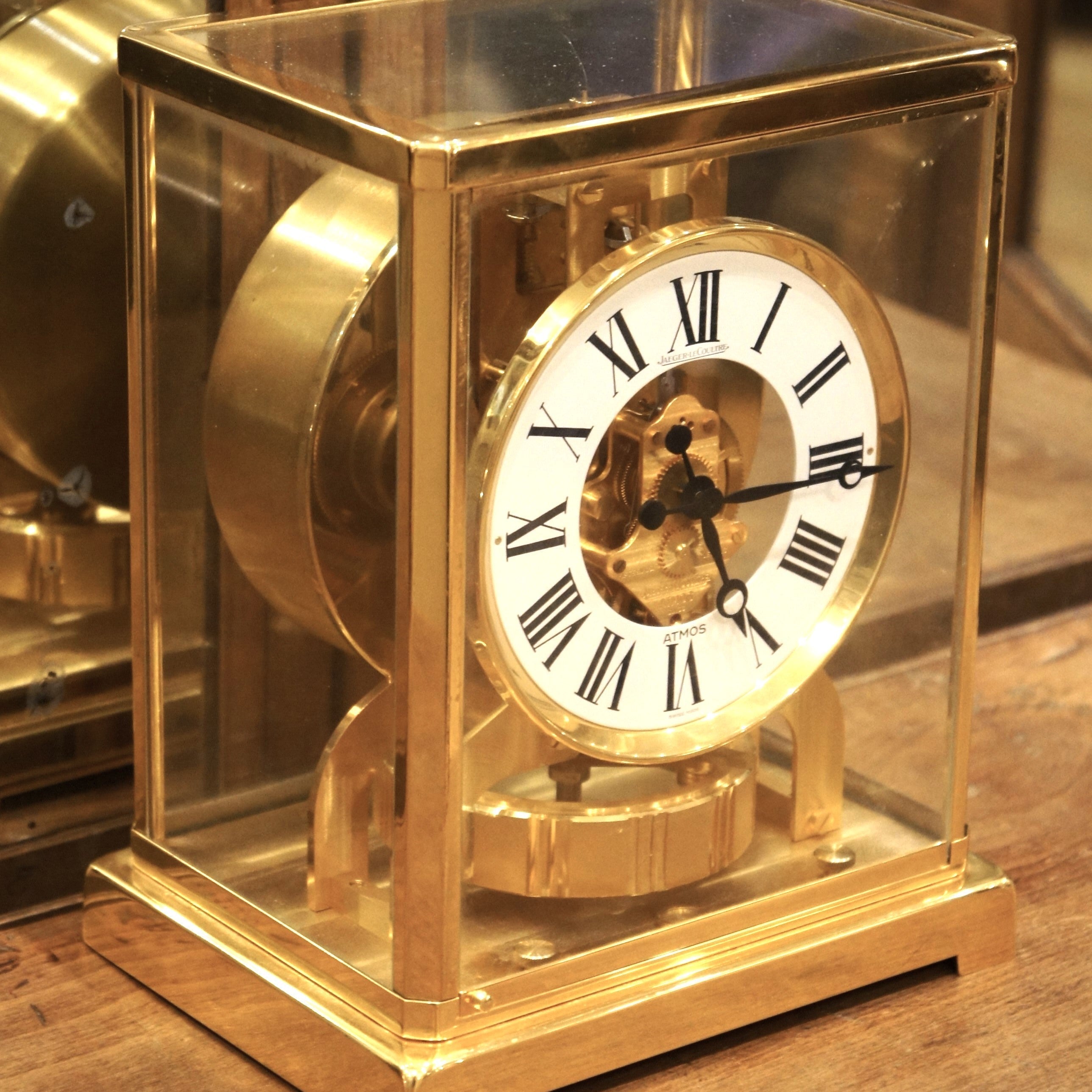
LE "Must de Cartier": democratizing luxury in Watchmaking
The "Must de Cartier" collection represents one of the most decisive moments in Cartier's illustrious history—a strategic pivot that not only revitalized the brand during an economically challenging period but also democratized luxury in a way that would influence the entire industry, which has since become global and essential.
A response to changing times
In the early 1970s, Cartier faced significant challenges. The luxury market was suffering from global economic uncertainty, particularly the oil crisis and the collapse of the Bretton Woods monetary system.
High-end traditional watchmaking also seemed increasingly disconnected from market realities. Furthermore, the arrival of quartz movements during these same years, which revolutionized the watchmaking industry down to its foundations (previously built almost entirely around manual or automatic mechanical movements), pushed major manufacturers to adapt to these new technologies with considerably reduced costs.
The Must de Cartier collection, launched in 1977, was the brilliant idea—the brainchild—of Alain-Dominique Perrin, who had just taken the helm at Cartier. It's not an exaggeration to speak of a "Eureka" moment for this visionary. Perrin recognized that Cartier needed to adapt to survive, envisioning a line that would maintain the brand's prestigious design language at all costs while reaching a broader, younger audience, restoring the brand's commercial margins, and incorporating the battery-powered "quartz" movement solution.
Design philosophy: accessible elegance
What made Must de Cartier watches revolutionary was their perfect balance between accessibility and luxury. They borrowed the elegant silhouettes of Cartier's classic Tank and Santos models but re-imagined them with more affordable materials. This approach maintained Cartier's distinctive aesthetic—Roman numerals, blue sword-shaped hands, and the signature sapphire cabochon crown—while creating entry points into luxury watchmaking.
The collection featured clean, minimalist dials, often in rich, monochromatic colors such as burgundy, navy blue, and British racing green. These bold color choices represented a departure from conventional luxury watch design, appealing to younger, style-conscious consumers.
Stroke of Genius: the introduction of Vermeil
At the heart of Cartier's approach to "accessible luxury" was a stroke of genius: the use of Vermeil. But what exactly is Vermeil?
Vermeil is a specialized gilding technique where sterling silver (a silver alloy containing 92.5% silver by weight and 7.5% by weight of other metals to enhance the hardness of the silver) is plated with a layer of gold. To qualify as genuine Vermeil by modern standards, the gold layer must have a thickness of at least 2.5 microns and a minimum gold content of 10 carats, although Cartier typically uses higher standards.
The stroke of genius comes from the fact that this technique offered, for the first time on a large scale, several advantages:
- Visual luxury: Vermeil provides the warm, lustrous appearance of solid gold while being significantly less expensive.
- Durability: The substantial gold layer offers better longevity than standard gold plating, making these watches truly luxurious items despite their more affordable price.
- Heritage connection: Vermeil has historical associations with aristocracy and fine objects, thus conferring cultural gravitas and historical reference to the watches.
- Material integrity: Unlike gold-plated brass (common in fashion watches), the sterling silver base maintains the piece's value and its status as a precious metal object over time.
The use of Vermeil allowed Cartier to create truly luxurious watches while costing approximately one-third the price of their solid gold counterparts.
Market impact and legacy
The Must de Cartier line experienced unprecedented success, helping transform Cartier from a prestigious but financially struggling jeweller into a global luxury powerhouse.
The collection's impact can be measured in several ways:
- It pioneered the concept of "accessible luxury" decades before it became an industry standard
- It attracted new, younger customers to the brand who would later upgrade to high-end Cartier pieces
- It demonstrated that design integrity could be maintained at lower price points
- It helped Cartier weather economic uncertainty when many luxury brands were faltering
Today, vintage Must de Cartier watches have become highly collectible, with their cultural importance and distinctive aesthetic sparking renewed interest. The Vermeil models, in particular, are the subject of special attention.
Whether you're a seasoned collector, simply an admirer of design history, or passionate about the Cartier universe, Must de Cartier watches are and remain a timeless object of desire, testifying to the spirit of innovation, the pursuit of luxury, and accessibility that doesn't sacrifice French sophistication.
Fun facts

The legendary "Lifetime Warranty" of Must de Cartier watches
In the 1970s and early 1980s, Cartier established an extraordinary and almost unbelievable warranty offer for its Must de Cartier watches, which has since become a legendary tale in vintage watch collecting circles.
The warranty was remarkably comprehensive: if anything went wrong with the watch at any point during its lifetime, Cartier would repair or replace it free of charge. This wasn't simply a standard manufacturing defect warranty but a truly extraordinary lifetime commitment that seemed to cover virtually all types of damage or malfunctions.
Collectors and watch enthusiasts quickly realized the incredible nature of this offer. Some owners would bring in watches decades after purchase, with significant wear and tear, and Cartier would honor the warranty. The company would completely repair the watch or replace it, often with a new model, at no cost to the owner.
This extraordinary warranty was eventually discontinued as it proved financially unsustainable for the company.
The generosity of the original offer became a testament to Cartier's confidence in its craftsmanship and its commitment to customer service during that era.
Today, this "lifetime warranty" is considered a fascinating element of horological history—a remarkable marketing strategy and customer service approach that would be unthinkable in today's luxury watch market.
Vintage watch collectors now look back on this period with a mixture of nostalgia and disbelief, recognizing this unique moment in Cartier's rich brand history.




